 Dabigatran is an anticoagulant that has direct action.
Dabigatran is an anticoagulant that has direct action.
Has the trade name of Pradax. The international non-proprietary name is dabigatran etexilate.
This agent is most commonly used in general surgery for the treatment of thrombotic conditions of various genesis, as well as for the prevention of thrombotic and thromboembolic pathologies and pre-silt states.
Contents
Pharmacological effects
- Side effects
Pharmacological action
Dabigatran( Dabigatran) is part of a group of drugs that have an inhibitory effect on tombinu. The main component of the drug is dabigatran etexilate. This component is classified as a prodrug with a low molecular weight type. It has no pharmacological activity.
During the application of this agent, a rapid absorption of the basic substance occurs and by hydrolysis, which is catalyzed by esterases, its transformation into dabigatran occurs.
The agent refers to drugs that inhibit thrombin, which has an active, competitive and reversible effect. Its main effect occurs in the composition of blood plasma.
During the cascade coagulation process, thrombin( serine protease) is converted into fibrin by fibrinogen.
As a result of a decrease in the active state of thrombin, the occurrence of thrombi is prevented. And Dabigatran itself has an inhibitory effect on free thrombin, thrombin of fibrin-binding type, and also affects platelet aggregation, which is caused by thrombin.
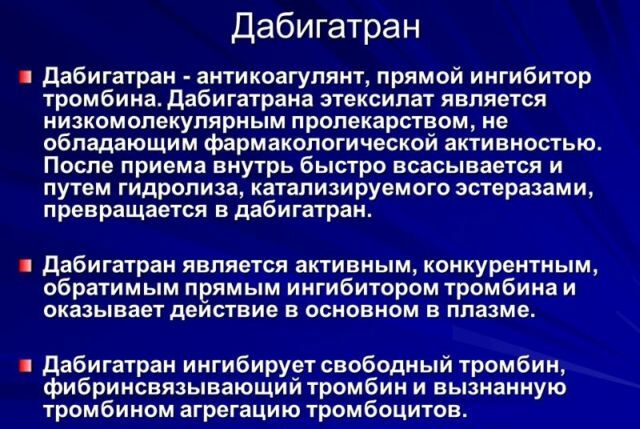
Pharmacokinetic properties of
The drug has the following pharmacokinetic properties:
- Suction .When the drug is administered orally to the blood plasma, the concentration level immediately increases, reaching Cmax from 30 minutes to 120 minutes. After the dabigatran reaches its maximum concentration level, its bi-exponential decline occurs. As a result, the final half-period of concentration of active substance in young people is from 14 to 17 hours, in the elderly from 12 to 14 hours. The absolute bioavailability of dabigatran etexilate is 6.5%.
- Breeding .The basic level of excretion of the drug occurs through the kidneys, almost 85%.Through the kidneys the remedy is displayed unchanged. Together with feces, about 6% of the administered dosage of the drug is excreted. In the next 168 hours after the administration of the drug, total radioactivity within the range of 88-94% of the total administered dose of the drug occurs.
Form release and component parts
Dabigatran is available in capsules, oblong, opaque. The capsule case is made in cream color and has a dosage marking "R 75" or "R 110".
On top there is a cover, which has a light blue color, it shows the symbolism of the manufacturer-Boehringer Ingelheim. Inside the capsules there are pellets of yellow color.
Composition of the preparation:
- The main component is dabigatran etexylate .In one capsule marked "R75", its level is 86.48 mg. In the capsule marked "R110", its content reaches 126.83 mg.
- Additional components - acacia gum, tartaric acid( coarse-grained type in the form of crystals or powder), a small level of hypromellose, dimethicone, as well as talc, giprolose.
- Components of the shell are carrageenan( E407), potassium chloride, titanium dioxide( E171), indigocarmine( E132), dye sunset yellow( E110), hypromellose, water in purified form.
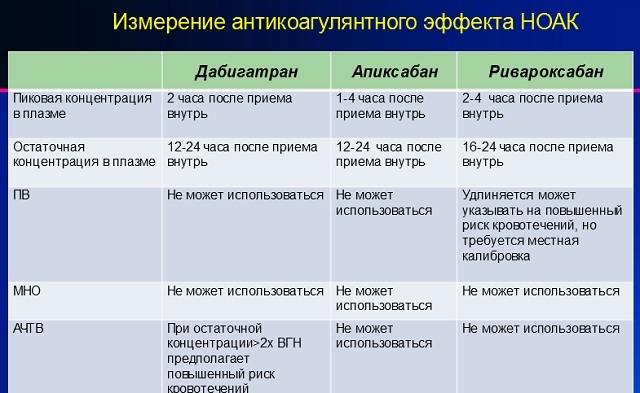
Scope of application
Dabigatran is prescribed under the following conditions: 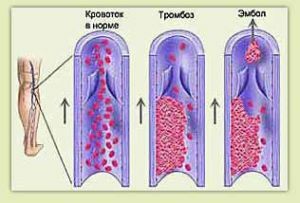
- during prophylactic treatment of venous thromboembolic disease in patients after orthopedic surgery;
- for the prevention of stroke and thromboembolic disease of the systemic course;
- for the treatment of deep vein thrombosis, as well as for thromboembolic pulmonary artery disease, is used for prophylactic therapy to reduce mortality in these pathologies;
- for prophylactic treatment for thrombotic disease of deep veins with recurrent course.
The drug is dangerous: contraindications and "pobochki"
Dabigatran has a lot of contraindications and possible side effects. Thus, this drug is not recommended for use in the following situations:
- in the presence of renal failure with severe course;
- various injuries of internal organs due to severe bleeding, as well as stroke with hemorrhagic character;
- presence of active bleeding, as well as diathesis with hemorrhagic course, problems of the process of homeostasis of a spontaneous or pharmacologically induced type;
- if there is a high risk of severe bleeding that is associated with gastric and intestinal ulcer, due to malignant tumors and formations, recent brain damage or spinal cord injury;
- if the patient has recently undergone surgery on the brain or spinal cord, or ophthalmic surgery;
- a patient has a history of recent intracranial hemorrhage;
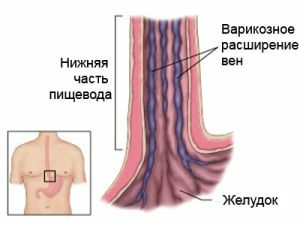
- if there is or is suspected varicose disease of the esophagus, the presence of congenital arteriovenous disorders, vascular aneurysms or large intraspinal or intracerebral vascular pathologies;
- for violations of the functioning of the liver and kidneys;
- age to 18 years;
- age category of people 75 years and over;
- if there is a prosthetic heart valve;
- increased sensitivity to the active component of the drug.
In addition, use caution when using the following indications:
- with a patient body weight of less than 50 kilograms;
- simultaneous administration of inhibitors with P-glycoprotein;
- in the presence of congenital or acquired diseases associated with a violation of blood clotting;
- with bacterial endocarditis;
- with esophagitis, gastritis or gastroesophageal reflux disease.
Side effects of
Among the side effects, the following conditions are observed:
- state of anemia and thrombocytopenia;
- can sometimes cause hematomas, severe bleeding from wounds, the appearance of nosebleeds, increased blood separation from the stomach and intestines, bleeding from the rectum, bleeding with a hemorrhoidal character, the onset of cutaneous hemorrhagic syndrome, hematuria, hemarthrosis;
- liver dysfunction;
- occurrence of hyperbilirubinemia;
- can sometimes decrease hemoglobin and hematocrit.
There is no research on whether Dabigatran can be used during pregnancy. But still many experts do not advise taking this medication for pregnant women, because its constituent components can have toxic effects on the fetus.
Breastfeeding during treatment with a drug should be stopped. Ingredients can get into the milk.
How to use the drug: dosage and schedule of prescriptions
Capsules of the drug are taken orally. In a day you need to take 1 or 2 times. You can take it before eating or after eating,  capsules are washed down with a small amount of water.
capsules are washed down with a small amount of water.
How to remove capsules from a blister:
- capsules should be removed from the blister, the foil exfoliates;
- in no case squeeze the capsules out of the foil;
- foil should be removed so that you can then easily remove the capsule.
Dosages in relation to therapy goals and associated risks:
- For prophylactic treatment of thrombotic disease in patients after orthopedic surgery , it is recommended to take 220 mg of the drug once every 24 hours. A day is taken 2 capsules of 110 mg.
- With prophylactic treatment of stroke and thromboembolism with the systemic course of , the drug is taken at a dosage of 300 mg per day. Every 12 hours you need to take 2 capsules with a dosage of 75 mg. Therapy continues for life.
- When thrombotic deep vein disease and pulmonary arteries per day should be taken 300 mg of the drug. Every 12 hours you should take 2 capsules with a volume of 75 mg. The duration of therapy is six months.
- With thrombotic deep-vein disease of recurrent nature, , 300 mg should be taken per day. Every 12 hours, 2 capsules with a volume of 75 mg each are taken. Therapy lasts for life.
We recommend to study - reviews of experts
From the comments of doctors who apply in practice Dabigatran.
Dabigatran or Pradaxa is an anticoagulant that has an effective effect in treating thrombotic and thromboembolic diseases. I believe that this tool has a good effect and always brings a positive result.
I often prescribe to my patients with serious forms of deep vein thrombosis and thromboembolism. Many of them note that almost from the first days of use they have much better health. However, this drug has a lot of contraindications and side effects, which can cause serious damage to health.
Specialist phlebologist
I often appoint my patient Dabigatran. In my opinion, this is one of the effective means of treating thrombotic and thromboembolic diseases.
It greatly facilitates the course of acute forms of pathologies, reduces inflammation, pain. But still this drug has many contraindications and side effects, so it should be taken with extreme caution and only according to the doctor's indications.
Head of the intensive care unit
From the practice of using
The word is taken by patients.
After a complete examination in a phlebologist, I was diagnosed with deep vein thrombosis with a recurrent course. I was prescribed a medicine by Dabigatran.
In a day I take 300 mg of this remedy. The course of treatment is lifelong. After I started taking this medicine, my condition improved, pain and discomfort disappeared.
Galina, 57 years old
I have long had thrombosis and thromboembolism. After consultation and examination, the doctor appointed to take Dabigatran. In a day I take 2 capsules in 110 mg. The course of treatment is 6 months. During this period I noticed positive results. My condition became much better, inflammation passed, severe pains disappeared. I began to feel much easier.
Constantine, 62 years
Price bites
Packing price Dabigatran with 60 capsules 110 mg is about 2800-3000 rubles, for packing with 10 capsules 75 mg 100-1200 rubles 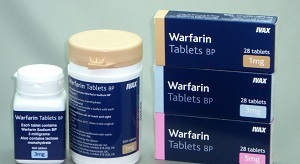 and with 30 capsules 150 mg 1400-1700 rubles.
and with 30 capsules 150 mg 1400-1700 rubles.
Analogues of Dabigatran, on which it is possible to replace the drug if necessary or in the absence of it in the ateq:
- Pradax;
- Warfarin;
- Xarelto.
